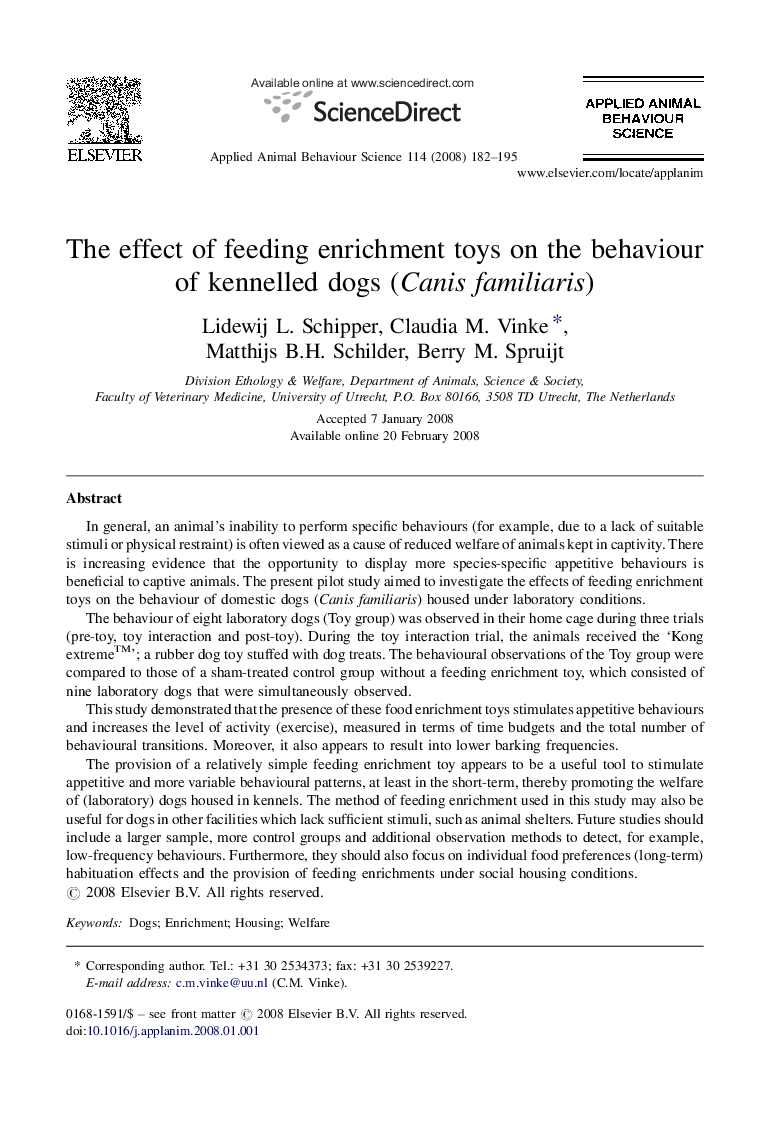| کد مقاله | کد نشریه | سال انتشار | مقاله انگلیسی | نسخه تمام متن |
|---|---|---|---|---|
| 4523855 | 1625418 | 2008 | 14 صفحه PDF | دانلود رایگان |

In general, an animal's inability to perform specific behaviours (for example, due to a lack of suitable stimuli or physical restraint) is often viewed as a cause of reduced welfare of animals kept in captivity. There is increasing evidence that the opportunity to display more species-specific appetitive behaviours is beneficial to captive animals. The present pilot study aimed to investigate the effects of feeding enrichment toys on the behaviour of domestic dogs (Canis familiaris) housed under laboratory conditions.The behaviour of eight laboratory dogs (Toy group) was observed in their home cage during three trials (pre-toy, toy interaction and post-toy). During the toy interaction trial, the animals received the ‘Kong extreme™’; a rubber dog toy stuffed with dog treats. The behavioural observations of the Toy group were compared to those of a sham-treated control group without a feeding enrichment toy, which consisted of nine laboratory dogs that were simultaneously observed.This study demonstrated that the presence of these food enrichment toys stimulates appetitive behaviours and increases the level of activity (exercise), measured in terms of time budgets and the total number of behavioural transitions. Moreover, it also appears to result into lower barking frequencies.The provision of a relatively simple feeding enrichment toy appears to be a useful tool to stimulate appetitive and more variable behavioural patterns, at least in the short-term, thereby promoting the welfare of (laboratory) dogs housed in kennels. The method of feeding enrichment used in this study may also be useful for dogs in other facilities which lack sufficient stimuli, such as animal shelters. Future studies should include a larger sample, more control groups and additional observation methods to detect, for example, low-frequency behaviours. Furthermore, they should also focus on individual food preferences (long-term) habituation effects and the provision of feeding enrichments under social housing conditions.
Journal: Applied Animal Behaviour Science - Volume 114, Issues 1–2, November 2008, Pages 182–195